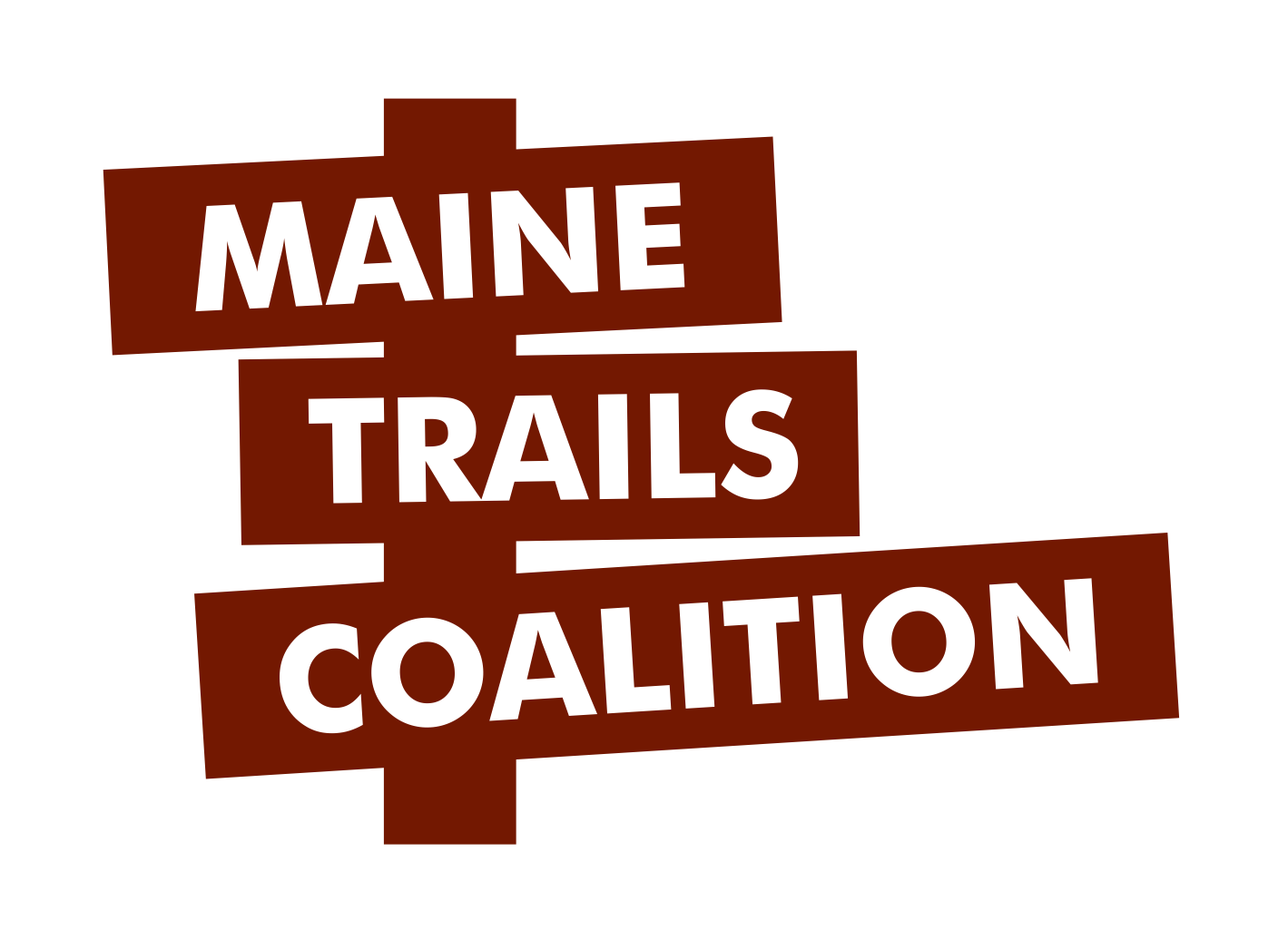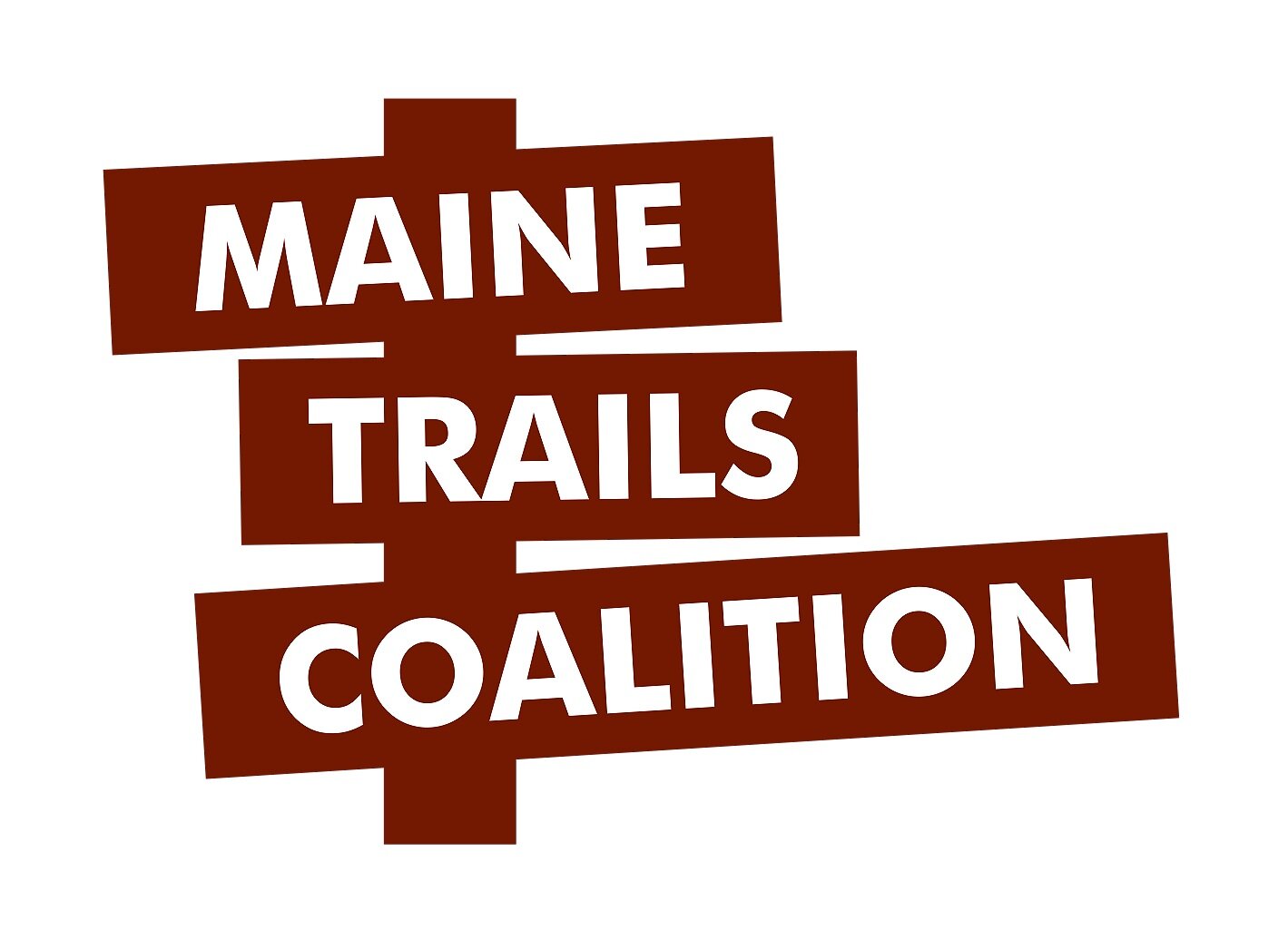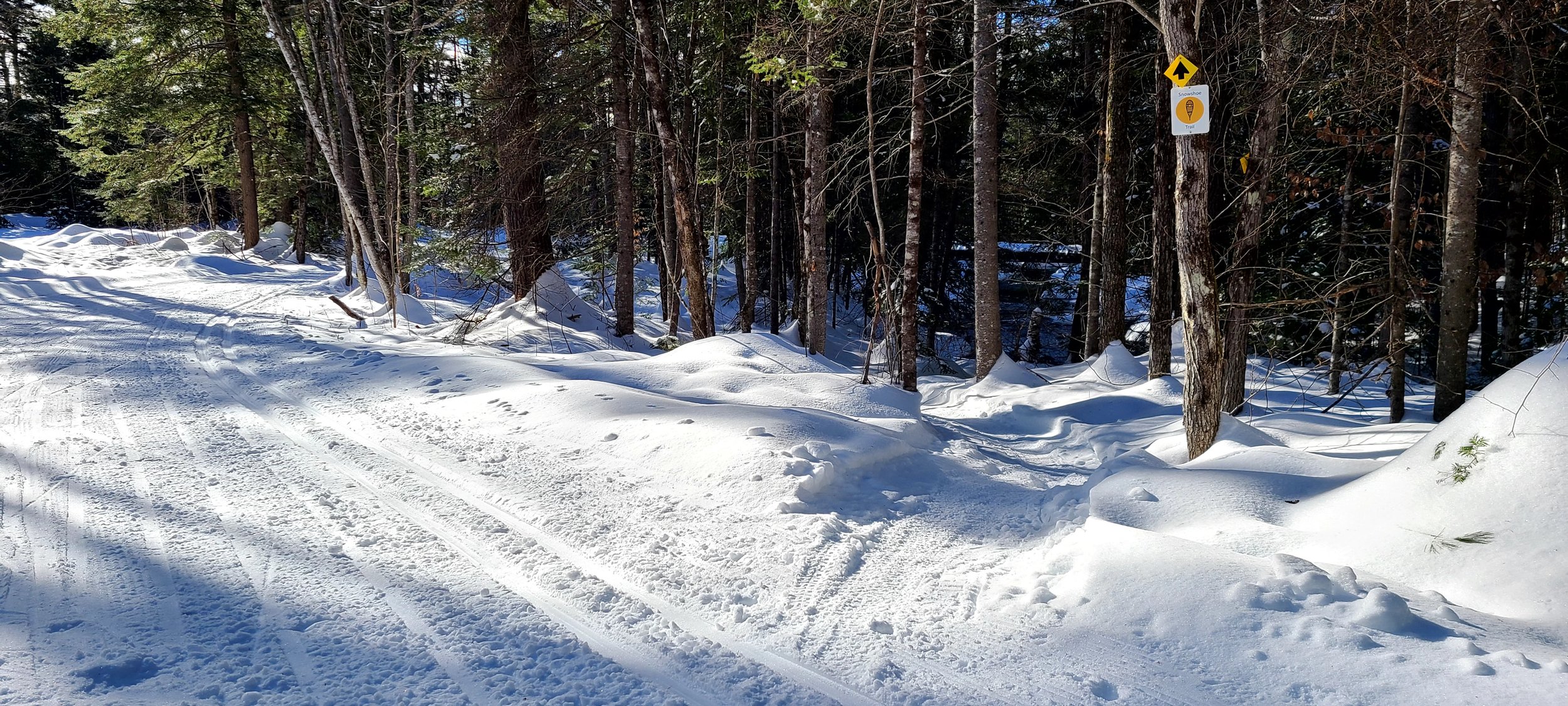Winter Trail Grooming: Inland Woods + Trails Guest Post
Have You Hugged a Trail Groomer Today?
Kiosk and map with information about winter trails
For many of us who enjoy recreating in the wintertime, the trail groomer is our unsung hero. Oftentimes we are out skiing or biking on the trails long after the work has been done, enjoying the fruits of their labor without really knowing just who the heck these people are and what they are thinking. Until AI takes over the world (or so the story goes), trails will rely on actual human beings to maintain and groom them.
Inland Woods + Trails, located in Bethel, maintains over 85 miles of trails with the mission of connecting people to communities in Western Maine through the sustainable management of high quality, durable trails and woods for all seasons. While hiking and mountain biking are the highlights in the warmer months, the colder months center on operating the Winter Trails Center located at the Bethel Resort & Suites. Inland Woods + Trails maintains and grooms 25 km of Nordic ski trails and 10 miles of snowshoe and fat bike trails, seven days a week. This hard work involves three year-round employees and one seasonal employee.
Karla Leandri Rider, Development + Communications Coordinator for Inland Woods + Trails, sat down with the groomers to find out more about their experience with winter grooming and to explore what makes them fired up to get out of bed every day and do this kind of work.
Meet the Team!
Eric Boyle-Wight, Operations Director
Eric has been with Inland Woods + Trails since 2019. He developed a passion for cross-country skiing through 35 years of family business at the Sunday River Inn. He has a Ph.D. in Environmental Engineering from the University of Maine.
Andy Bartleet, Trail Steward
Andy has been with Inland Woods + Trails since 2019. Originally from the U.K., he moved to Maine to work in Outdoor Education, leading multi-day trips in the back country: hiking, canoeing, climbing, skiing, dogsledding, snow shoeing, sea kayaking and sailing.
Kurt Fisher, Groomer
Kurt has been with Inland Woods + Trails seasonally on the weekends since 2017 and was a volunteer groomer in 2016. His day job is as a Network Engineer for Consolidated Communications.
Ian Hathaway, Recreation Technician
Ian has been with Inland Woods + Trails since 2023 and this is his first year doing winter grooming (and he’s having a blast!) He has a Bachelors in Parks, Recreation, and Tourism Management as well as a Masters in Forest Resources from the University of Maine.
How long have you been doing winter grooming and what kind of training did you receive?
Eric: I think most of my life. I grew up with a family business of a cross country ski center so as soon as I was able to drive the snowmobile, I guess that’s how long I've been grooming. I don't want to think how many years that has been. I learned a lot from various other groomers throughout the years. I’ve had no formal training except for just working with people who were doing it.
Andy: I think I started grooming back in the early 2000s, working part-time for the Bethel Inn when they managed the Trail Center. I learned a lot from Mike Cooper who used to own the Inn, just following him around and getting pointers.
Kurt: 8 years, no formal training, lots of trial and error and reading.
Ian: This is my first year grooming and I am still getting the hang of it. Reading the snow and understanding how the machines work, and how to keep them running efficiently is a bit of an art. I have been training under the more senior groomers at IWT but once you know how the equipment works, it seems that the best way to get better is to keep practicing and learning what snow needs what sort of attention. When to start, speed, raker depth, and machine position all need to be tuned based on the terrain, weather, and snowpack.
Why do you do the work you do, and what do you like the most about it?
Eric: Skiing has always been a passion, and I think that's probably because it was how I grew up. I love skiing on well groomed trails and the experience of being able to create them is just really amazing and it's fun to be out in the woods, transforming the snow, reading the snow, transforming it into this beautiful, skiable surface.
Andy: I originally needed wintertime employment when I started working for Inland Woods + Trails several years ago. It started off as part-time grooming but became more and more full-time until I became a full-time, year-round employee. I do like wandering around there in the woods, making the trails look nice, seeing sunrises most mornings. That's pretty darn cool.
Kurt: I have another job that’s a desk job so really enjoy the time outside. It’s also very rewarding and instantly gratifying. I also love working the snowstorms and being out during them.
Ian: I enjoy working in the outdoors and even more so, the opportunity to facilitate a memorable outdoor recreation experience for those in my community. Getting to see sunrises and ride around on snowmobiles in the wee-hours of the morning is also a plus.
What does it take to groom for fat biking vs. cross-country skiing?
Eric: You are really looking at two different types of grooming with two different goals. With cross-country skiing, you want a surface that is firm, but not too hard for recreational skiers. Classic skiers like to have tracks that are not too icy. And with fat bike grooming, you need a really hard surface. It needs to be hard pack most of the time. So, the goal for biking is to make it hard packed and the goal for cross-country skiing to make it firm but forgiving.
Andy: Typically bike trails are not much wider than the snowmobile and drag that are used to groom the trails. It really is a huge difference in how physical it is to groom the bike trails at the same temperatures as grooming the ski trails. I typically have on two insulated jackets and warm pants for ski trail grooming, and at the same temperature, if I'm doing the fat bike trails, I've probably got on a wind proof jacket, lightweight rain jacket on top of a light kind of a fleece jacket and long underwear because you just throw the snowmobile around so much more you just overheat otherwise. So different equipment and then typically different times of the day for grooming as well. We groom the ski trails early in the morning before the trail center opens, and the bike trails are best groomed after we close while the snow is still warm as they will typically freeze up overnight.
Kurt: It’s interesting. Ski grooming and fat bike grooming are almost opposite techniques. Ski trails need to be groomed when it’s cold, bike trails when it’s warm. We try to make the ski trails soft and the bike trails hard. We’ve also hand built most of our fat bike groomers because it’s sort of a new technique that’s evolving.
Ian: While fat biking requires less thought on the actual groom, the trails are much narrower and more winding. Using snowmobiles to groom the trails up and down hills and tight corners requires finesse and a plan for every turn. Ski trails are much wider and the turns more gradual. While hills and corners do come into play, creating a solid and well combed surface is a greater focus. A lot more time is spent checking the groomer behind you than watching out for trees and turns ahead.
Some of the many types of winter trails you will find groomed at Inland Woods + Trails
(from left to right: skate lane with classic tracks, and fat bike/snowshoe tracks)
What is your favorite piece of grooming machinery and why?
A sampling of winter trail grooming equipment used by Inland Woods + Trails with the piston bully on the far right.
Eric: It takes so many different kinds of machines to actually groom. I'd say my favorite is definitely the piston bully and it's what is it what you're able to do with a wide variety of snow conditions, being able to till and compress the snow blade shape. Unfortunately, we don't always have enough snow to run a piston bully and so then you're starting off with snowmobiles or some other kind of track vehicle to pull drags. Snowmobiles are great, not so fun when they are broken, in the cold. And that’s a small part of grooming – fixing things in the cold.
Andy: Right now, it's the Bobcat as it is easier to drive than the snowmobiles and your enclosed, with a heater and windshield wipers, and we just got it set up with a rearview mirror so you can keep an eye on how the grooming is going and see where the teeth are out and how deep they are cutting in. Yesterday I hooked up a light on the back that's wide, so I don’t have to rig up a flashlight anymore and can see what’s happening in the dark. You’ve got more power in the Bobcat when you're going around some of our trails that are very steep ups and downs, twisty, tiny, and tight turns. With the snowmobile, you would have to rely more on momentum than with the Bobcat. You seem to be able to crawl around things that you just have no hope of getting around with the snowmobile at the same speed. You just get bogged down and get stuck with the snowmobile.
Kurt: Nothing grooms as good as the piston bully, but I prefer to groom on the snowmobile because I feel more in touch with the process of grooming. It’s easier to verify the groom quality. It’s outside and feels more personal. When grooming the fat bike trails, I love the K-Fish 2000, and it’s not just because I built it. It grooms a beautiful bike trail.
Ian: It’s a toss-up. While the snowmobiles are fun to ride around in the woods and across the fields, the Bobcat UTV has a heater, and that comes in handy when its 0 degrees and dark.
Some of the grooming implements, including the K-Fish fat bike groomer attachment (center).
Grooming with the Bobcat
Setting classic tracks- this is often one of the last steps to grooming a trail for cross-country/nordic skiing.
Most people don’t think about the work that goes into the winter trails in the non-winter months. What would you say is the most important winter trail prep activity?
Eric: You have to get the trails as smooth as possible and doing this in the summer/fall is key, getting all the rocks and bits and everything smoothed out. The more you can do, the better in getting the trails elevated and drained, so that you're not dealing with water issues all year. A well-built trail system is definitely going to be a smooth surface that is elevated and drained.
Andy: We never get to do enough of this because of time. Most important tasks are cutting down the growth that comes up on some of the trails, cutting back the tree bows growing over the trails, and addressing drainage issues. There is so much to do that we could easily work for six months on the winter trails in the non-winter months if we had the resources.
Kurt: Mowing the trails, so that the sticks and grass don’t stick up when we groom at the beginning of the season. Of course, major repairs like bridges culverts and removing rocks.
Ian: I’m still learning the ropes, but in my first year I have seen that clearing trails of anything that might get in the way of a smooth groom is the best way to prep the terrain. Cutting back branches, clearing downed trees, and trimming grasses and brush all help the snow fall flat and keep debris out of the way of recreators and groomers alike.
What advice do you have for someone who wants to become a groomer or looking for tips for better grooming?
Eric: You know, I think the best thing is to work with someone who has done it before. Grooming is kind of a mix of art and science. There is a lot of art in understanding how to read the snow and a lot of science in how to work it.
Andy: Get some decent warm boots, gloves, and clothing, because it could be really cold out there. Studying how snow changes with temperature and being aware of that and being in tune with how things are, looking at the weather forecast and trying to predict what the snow is going to be like when you come in the next morning. You will be sort of prepared because if you have a plan in your mind that you’re going to use a snowmobile, but then come in and realize you need the piston bully, it's going to change dramatically what you're able to groom.
Kurt: There’s not a huge hurdle to getting started besides warm clothing in the early mornings. Try to work with someone that’s a good groomer. It makes a big difference to understand what the goals are. Don’t get stuck on using one piece of equipment, you need to change the equipment per the conditions depending on the way the groom is coming out. You may not get to use the snowmobile and need to get in the piton bully, etc. It’s way more than just riding around in circles. I try to use the least impactful piece of equipment to produce quality groom. You don’t want to beat the snow up every day; we need to conserve the consistency.
Ian: Although I feel my expertise is limited and my advice should be taken with a mountain of salt, I think most people would be surprised how enjoyable it is. If you’re comfortable running the types of machines used in the process, and don’t mind an early start, there’s nothing better than seeing that you’ve laid out the perfect corduroy for skiers to experience.
Would you just look at that perfectly groomed corduroy!
We want to thank Inland Woods + Trails for sharing so much about the winter trail grooming world with us! Visit their website for details on real-time trail conditions, rental and lessons info and more! Be sure to check their winter trail map for details on all trail user responsibilities.
There’s still plenty of winter left to hit the trails. With so many special places to get out there this season, let us know you’re favorite winter trail and activity by commenting on our winter grooming post on Facebook or Instagram, or dropping us a note here.
This trail is groomed for skiing, and also allows responsible dog owners to bring their dogs.













